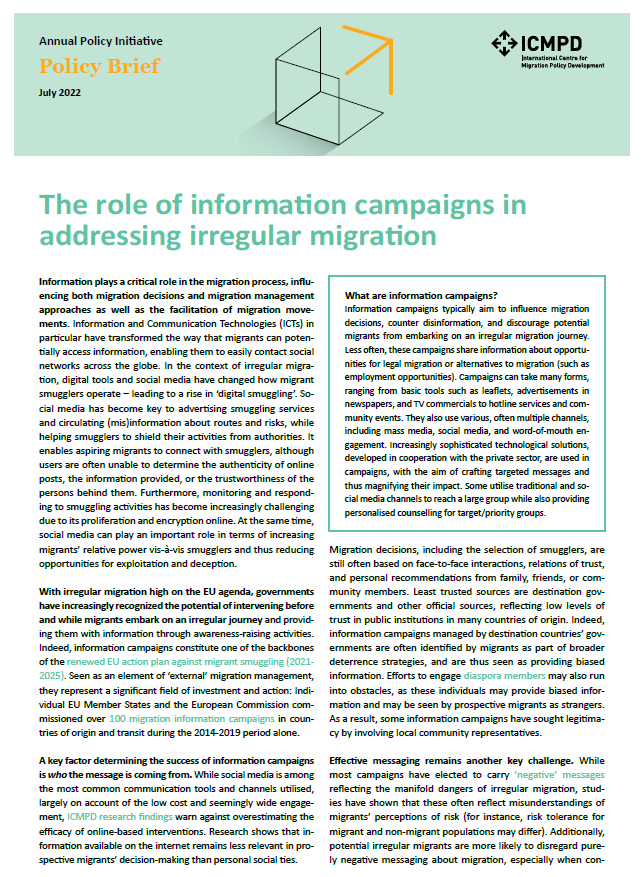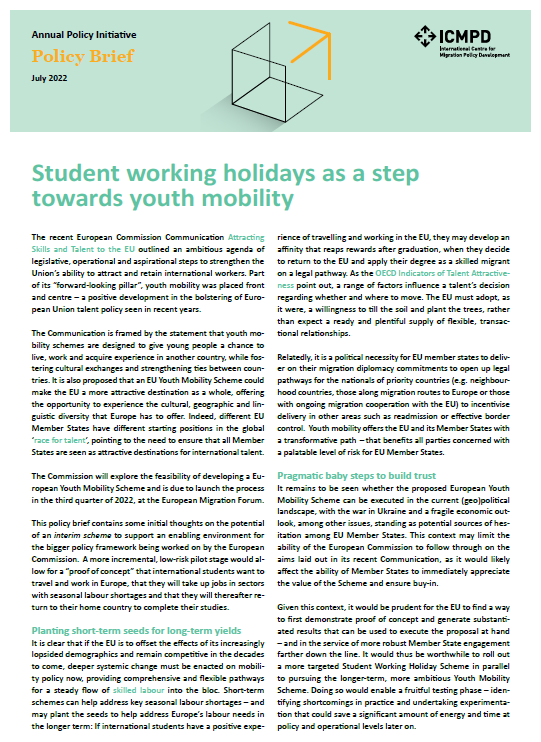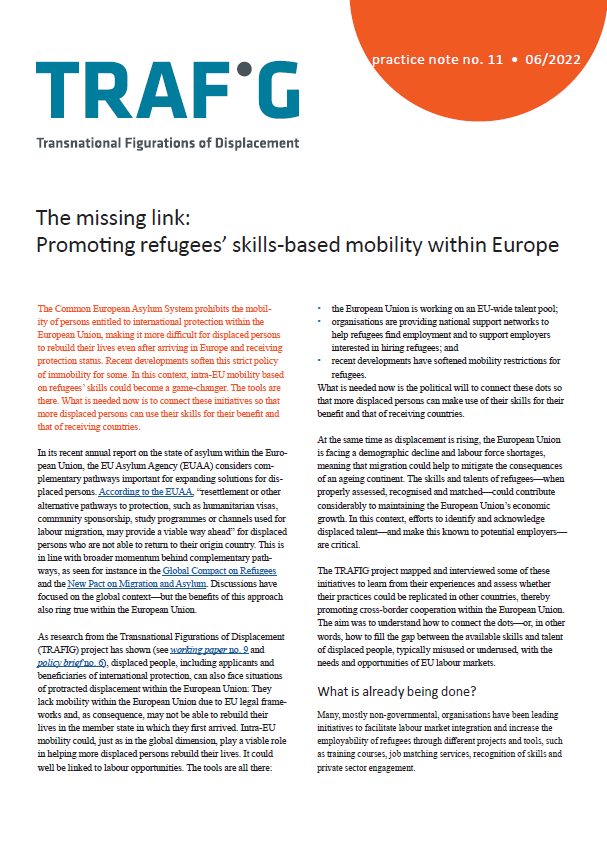With irregular migration high on the EU agenda, governments have increasingly recognized the potential of intervening before and while migrants embark on an irregular journey and providing them with information through awareness-raising activities. Information campaigns thus represent a significant field of investment and action: Individual EU Member States and the European Commission commissioned over 100 migration information campaigns in countries of origin and transit during the 2014-2019 period alone. This policy brief explores how information campaigns can be implemented and further studied to improve their efficacy.
Released 01.03.2023
In March 2025 at the latest, temporary protection for people fleeing Ukraine comes to an end. Determining what comes next is a complex process in which host countries must navigate multiple policy options, practical considerations, and political and economic interests. There is no time to waste in developing a coordinated approach, particularly due to the large number of people concerned, the range of countries involved, and the prospect of necessary legislative changes.
Released 21.02.2023
One year after the Russian invasion, much uncertainty remains. Remote work can provide a degree of flexibility for some refugees from Ukraine, supporting integration in the short term and reconstruction in the long term. Supporting Ukrainian teleworkers is a smart move.





